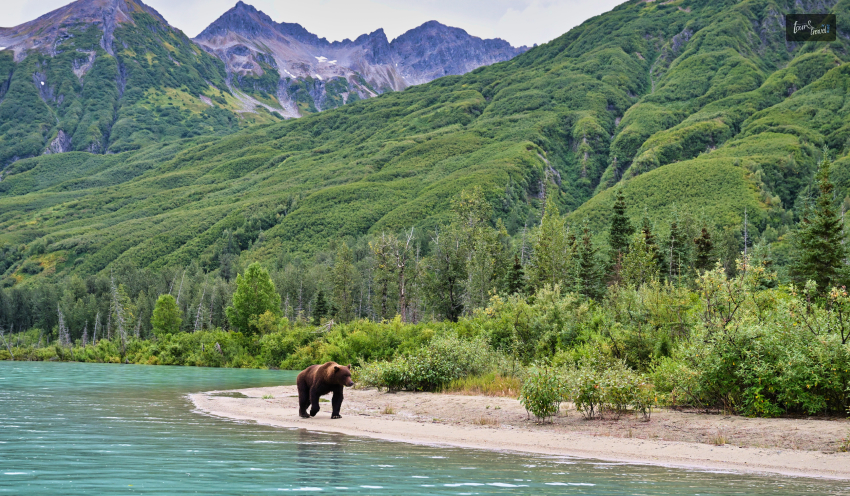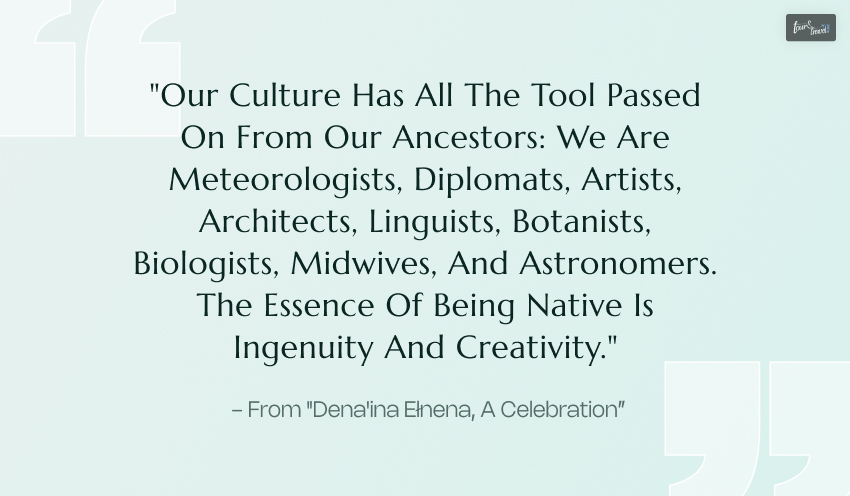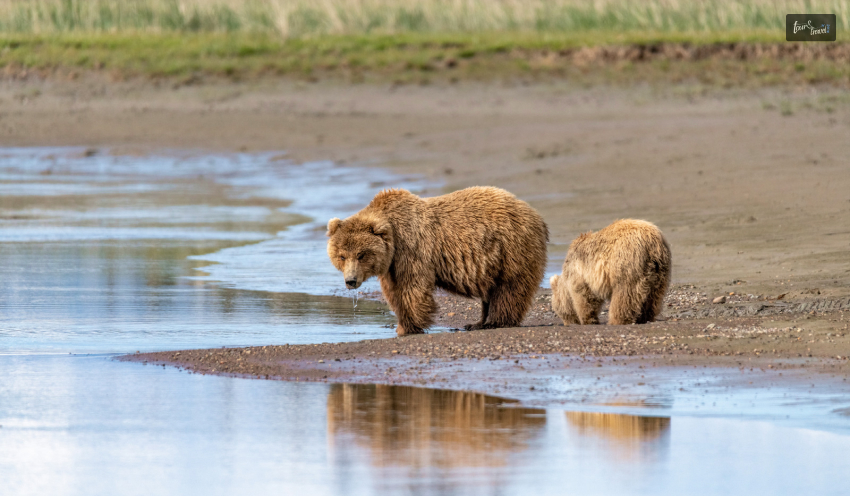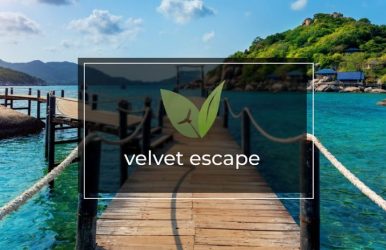Top 15 Restaurants In Colombia You Must Visit While Traveling
BY Barsha Nov 4, 2022
Known for being the ‘Gateway to South America,’ Colombia is famous for three things - culture, scenic destinations, and flavorful dishes, all of which attract millions of tourists yearly! And the whole bustling culinary culture in Colombia highlights unique and bold flavors - from traditional street dishes to gourmet dishes, restaurants in Colombia never disappoint. Sounds tempting…right? So it’s time to get ready for a delicious food experience and a great time when you visit this beautiful country - keep reading to check out all the restaurants you can’t miss out on in Colombia. Top 15 Restaurants In Colombia You Must Visit While Traveling Do you know Colombian cuisine? Then, you need to think again. The humble yet delicious corn arepa, several potato varieties, Caribbean and Pacific coastlines, multiple biomes-spanning biodiversity, and altitudes are all primary contributors to the ever-inspiring food culture in Colombia. Too long undermined and overlooked, Colombia has finally stepped to display how it’s not just a culturally rich country but also happens to be a gastronomically diverse and rich country. So for anyone traveling to Colombia, good food is definitely on the cards! Instead of googling ‘restaurants in Medellin Colombia’ or similar terms related to specific locations, there’s a better way to navigate to all the hottest eating spots in the country. So without wasting any more time, scroll down and check out all the top restaurants in Colombia. 1. Carmen (Cartagena and Medellín): Carmen Angel is one of the most renowned chefs in Colombia. So there’s no reason why you wouldn’t visit either of his two namesake restaurants - one in Cartagena and the other in Medellín. The menu is exquisite and features mouthwatering temptations like Pacific coast-sourced beef tenderloin, and ceviche served with the Andean potato gratin. 2. ElCielo (Bogotá and Medellín): One of the best restaurants in Bogota and even Medellín, ElCielo is the brainchild of Juan Manuel Barrientos, Colombia’s very first Michelin star-awarded chef. This high-end restaurant is one of the most luxurious restaurants, with its own 12-course menu for tasting and wine pairing purposes. [googlemaps https://www.google.com/maps/embed?pb=!1m18!1m12!1m3!1d2036058.8178969708!2d-76.2957829375!3d4.651506000000017!2m3!1f0!2f0!3f0!3m2!1i1024!2i768!4f13.1!3m3!1m2!1s0x8e3f9a421c3d3e59%3A0x2dae4b5e7628203b!2sRestaurante%20El%20Cielo!5e0!3m2!1sen!2sin!4v1667557723943!5m2!1sen!2sin&w=800&h=600] [googlemaps https://www.google.com/maps/embed?pb=!1m18!1m12!1m3!1d2036058.8178969708!2d-76.2957829375!3d4.651506000000017!2m3!1f0!2f0!3f0!3m2!1i1024!2i768!4f13.1!3m3!1m2!1s0x8e3f9a421c3d3e59%3A0x2dae4b5e7628203b!2sRestaurante%20El%20Cielo!5e0!3m2!1sen!2sin!4v1667557723943!5m2!1sen!2sin&w=800&h=600] 3. Leo (Bogotá): Minimalist and contemporary Leo is a refined yet subtle spot for celebrating Colombia’s diverse biocultural heritage. The brainchild of Leonor Espinosa, an award-winning chef, Leo is all about promoting the diverse biomes and varied produce of the country. One of the best restaurants in Colombia, the famous Innovation Bar, serves fermented drinks inspired by Colombian culture. [googlemaps https://www.google.com/maps/embed?pb=!1m18!1m12!1m3!1d3976.6967162686446!2d-74.05863958461998!3d4.648080396623566!2m3!1f0!2f0!3f0!3m2!1i1024!2i768!4f13.1!3m3!1m2!1s0x8e3f999ba47a4c7f%3A0xbb64e21890b75f6c!2sLeo!5e0!3m2!1sen!2sin!4v1667557766131!5m2!1sen!2sin&w=800&h=600] 4. Platillos Voladores (Cali): Cali is known as the salsa-dancing capital of the world - so there’s no way you are missing out on visiting Cali, and if you are visiting Cali, then there’s no way you are missing out on Platillos Voladores. The restaurant blends Pacific flavors and ingredients with different international cuisines, all resulting in delicious mouthwatering fusion dishes! [googlemaps https://www.google.com/maps/embed?pb=!1m18!1m12!1m3!1d63724.12312510651!2d-76.57065750208804!3d3.409154714720731!2m3!1f0!2f0!3f0!3m2!1i1024!2i768!4f13.1!3m3!1m2!1s0x8e30a66ddab81f2d%3A0x14938fcbbbd3658!2sPlatillos%20Voladores!5e0!3m2!1sen!2sin!4v1667557810390!5m2!1sen!2sin&w=800&h=600] 5. Elvia (Barichara): Did you know that Barichara used to be known as one of the prettiest towns in Colombia? This beautiful town is not just known for its beauty but also famous for Elvia, an incredible restaurant. The modern open kitchen displays magical creations, all made from ingredients sourced from Elvia’s organic garden. [googlemaps https://www.google.com/maps/embed?pb=!1m18!1m12!1m3!1d2029089.9717414358!2d-75.46449313749994!3d6.638682699999997!2m3!1f0!2f0!3f0!3m2!1i1024!2i768!4f13.1!3m3!1m2!1s0x8e69cfc92f6b757b%3A0xebd34a88d6589849!2sElvia%20Restaurante!5e0!3m2!1sen!2sin!4v1667558757470!5m2!1sen!2sin&w=800&h=600] 6. Ajiacos & Mondongos (Medellín): One of the best restaurants in Medellin, Ajiacos & Mondongos is your Colombian staple! The restaurant specializes in creating traditional Colombian dishes, such as Mondongos, a soup made from slow-cooked vegetables and tripe, or even Ajiaco, a potato & chicken soup hailing from Bogotá. [googlemaps https://www.google.com/maps/embed?pb=!1m18!1m12!1m3!1d1016765.4237086639!2d-75.38288980101268!3d5.456384880505718!2m3!1f0!2f0!3f0!3m2!1i1024!2i768!4f13.1!3m3!1m2!1s0x8e44282a5c9fb8c7%3A0x5a967500700fd6cc!2sAjiacos%20y%20Mondongos!5e0!3m2!1sen!2sin!4v1667559000462!5m2!1sen!2sin&w=800&h=600] 7. Prudencia (Bogotá): Prudencia is one of these cozy family-run restaurants you can’t simply miss out on! Located at La Candelaria, the historic heart of the Colombian capital of Bogotá, Prudencia is famous for exuding a rustic charm with an exciting open kitchen for engaging with guests. From smoked meat dishes to fermented veggies, the foodie inside you will be spoilt for choice. [googlemaps https://www.google.com/maps/embed?pb=!1m18!1m12!1m3!1d3976.990489628358!2d-74.07289048462013!3d4.595725796661303!2m3!1f0!2f0!3f0!3m2!1i1024!2i768!4f13.1!3m3!1m2!1s0x8e3f99af4965fde9%3A0xe7e227961d01ddcb!2sPrudencia!5e0!3m2!1sen!2sin!4v1667559047131!5m2!1sen!2sin&w=800&h=600] 8. Sambombi Bistró (Medellín): While seeking the best restaurants in Colombia, there’s no way you can miss out on Sambombi Bistró! The best part? Sambombi Bistró is famous for celebrating the mouthwatering simplicity of those ‘small sharing plates.’ Moreover, the menu keeps changing every week keeping both creativity and freshness as priorities. [googlemaps https://www.google.com/maps/embed?pb=!1m18!1m12!1m3!1d3966.4341306302563!2d-75.56749448461457!3d6.206325895507153!2m3!1f0!2f0!3f0!3m2!1i1024!2i768!4f13.1!3m3!1m2!1s0x8e4429515b409a6d%3A0x99d8a58126e66fc!2sSambombi%20Bistr%C3%B3%20Local!5e0!3m2!1sen!2sin!4v1667559104123!5m2!1sen!2sin&w=800&h=600] 9. Mora Castilla (Popayán): Located in the rustic and laidback setting of the Cauca region, Mora Castilla specializes in serving traditional dishes. The best part? This region is famous for its staple, Carantanta, served with Hogao (a sauce made from blending onions and tomatoes) and Empanadas de pipián - you can easily wash these down with Lulada, a fruity beverage made from Lulo, the staple citrus fruit of Latin America. [googlemaps https://www.google.com/maps/embed?pb=!1m18!1m12!1m3!1d3986.1904636766894!2d-76.60587428462499!3d2.443537698219318!2m3!1f0!2f0!3f0!3m2!1i1024!2i768!4f13.1!3m3!1m2!1s0x8e300375ac9d2cb7%3A0xe491628865424fa7!2sMoraCastilla!5e0!3m2!1sen!2sin!4v1667559176467!5m2!1sen!2sin&w=800&h=600] 10. Idílico (Medellín): The brainchild of Chef Yeison Mora, Idílico, focuses primarily on Colombia’s rich biodiversity in order to create wholesome and traditional dishes. The intimate and relaxed Idílico serves seafood hailing from the Pacific and potatoes from the Andes, thereby paying homage to the diversity Colombia is known for - the place also highlights seasonal ingredients! [googlemaps https://www.google.com/maps/embed?pb=!1m18!1m12!1m3!1d4050563.754787655!2d-77.06462344074598!3d7.506181115274021!2m3!1f0!2f0!3f0!3m2!1i1024!2i768!4f13.1!3m3!1m2!1s0x8e468271e108cb57%3A0x8c1082de43f53b9c!2zSWTDrWxpY28!5e0!3m2!1sen!2sin!4v1667559235756!5m2!1sen!2sin&w=800&h=600] 11. El Chato (Bogotá): When you type ‘restaurants in Bogota Colombia’ on Google, every listicle will point towards El Chato! Located in the prospering neighborhood of Chapinero, El Chato is a contemporary bistro that specializes in blending Colombian ingredients with different global flavors. Some of their popular dishes, for instance, are White Trout served with Filo pastry, and Lamb served with tasty Coconut rice. [googlemaps https://www.google.com/maps/embed?pb=!1m18!1m12!1m3!1d2030559.5800285575!2d-75.21298630910624!3d6.272057268921479!2m3!1f0!2f0!3f0!3m2!1i1024!2i768!4f13.1!3m3!1m2!1s0x8e3f9a44fa5cc941%3A0x1e38af7880720026!2sEl%20Chato!5e0!3m2!1sen!2sin!4v1667559276974!5m2!1sen!2sin&w=800&h=600] 12. Celele (Cartagena): Located in Cartagena’s colorful Getsemaní neighborhood, Celele is a Caribbean-inspired restaurant specializing in exploring unique flavors! With the goal of celebrating and preserving recipes from the Caribbean coast, Celele is known for its Goat Kebabs, Coconut Sorbets, and Lobster Tartare. [googlemaps https://www.google.com/maps/embed?pb=!1m18!1m12!1m3!1d3923.9924042664156!2d-75.5466545845926!3d10.42217689256251!2m3!1f0!2f0!3f0!3m2!1i1024!2i768!4f13.1!3m3!1m2!1s0x8ef62f5855aa5705%3A0x42f4d16bf11b8b85!2sRestaurante%20Celele%20by%20Proyecto%20Caribe%20Lab!5e0!3m2!1sen!2sin!4v1667559317565!5m2!1sen!2sin&w=800&h=600] 13. Alambique (Medellín): While looking up the best restaurants in Colombia, we came across Alambique, tucked away near the Parque Poblado at Medellín. Once you head upstairs, you will be greeted with beautiful Bohemian interiors inside this culinary laboratory. Dishes such as Seafood Stew and Crisp Pork Ceviche are slow-cooked and curated to be shared. [googlemaps https://www.google.com/maps/embed?pb=!1m18!1m12!1m3!1d3966.40015171668!2d-75.57298448461466!3d6.21083779550389!2m3!1f0!2f0!3f0!3m2!1i1024!2i768!4f13.1!3m3!1m2!1s0x8e44282bd472c605%3A0x809158f3af3c4193!2sAlambique!5e0!3m2!1sen!2sin!4v1667559368323!5m2!1sen!2sin&w=800&h=600] 14. Mar y Zielo (Cartagena): While searching for restaurants in Cartagena, Colombia, there’s no way you can miss out on the swanky gastro bar, Mar y Zielo, located at the vibrant, historic center of Cartagena. This Caribbean restaurant is popular for its signature cocktails and handcrafted dishes, all inspired by the four different corners of the country. [googlemaps https://www.google.com/maps/embed?pb=!1m18!1m12!1m3!1d3923.9688683825448!2d-75.5527135845926!3d10.42404509256121!2m3!1f0!2f0!3f0!3m2!1i1024!2i768!4f13.1!3m3!1m2!1s0x8ef62500ff0a2c6d%3A0x5a62d847601178ef!2sMar%20y%20Zielo!5e0!3m2!1sen!2sin!4v1667559412993!5m2!1sen!2sin&w=800&h=600] 15. Oci.Mde (Medellín): Located on the leafy streets of Medellín, Oci.Mde specializes in combining Asian flavors and cooking techniques with traditional Colombian ingredients. The popular restaurant exudes a convivial and laidback atmosphere while serving marines, fish, and slow-cooked meat dishes. Moreover, the staff is very welcoming and exceptionally friendly. [googlemaps https://www.google.com/maps/embed?pb=!1m18!1m12!1m3!1d3966.4354781638476!2d-75.56651318461464!3d6.206146895507279!2m3!1f0!2f0!3f0!3m2!1i1024!2i768!4f13.1!3m3!1m2!1s0x8e468282967b8d1f%3A0x5c2560d370ddc4dd!2sOCI.mde!5e0!3m2!1sen!2sin!4v1667559468187!5m2!1sen!2sin&w=800&h=600] Frequently Asked Questions (FAQs): Check out the most frequently asked questions about the most popular restaurants in Colombia mentioned below. 1. What Is The Most Popular Restaurant In Colombia? The most popular restaurant in Colombia is Andrés Carne de Res! The brainchild of Andrés Jaramillo, this popular restaurant has so much to offer guests - from delicious dishes to an endless list of cocktails, you will be spoilt for choice. In fact, it is highly probable that your meal will be accompanied by grape-crushing serfs and fire-eating nymphs. 2. Does Colombia Have Good Food? Colombian cuisine is well seasoned and delicious, especially all tipico Colombian food items. In fact, each region in this country is home to a speciality dish, and all the speciality dishes are incredible. So you cannot miss out on the tasty food that you get here! 3. What Food Is Bogota Known For? Bogota is known for the following food items:➊ Ajiaco,➋ Buñuelos,➌ Feijoa,➍ Grenadilla, and➎ Lechona. 4. Do Colombians Eat Lots Of Meat? Technically, yes! Colombia is not a fun place to visit for vegetarians since a typical Colombian diet has plenty of meat. Then there are the coastal regions, all popular for different varieties of lobsters, fish, and other seafood, all prepared with this mouthwatering sauce crafted from milk and coconut. And It’s A Wrap: Bon Appétit! Planning a trip always includes finding the best places to eat! So how can you plan a trip to Colombia without finding out all the restaurants in Colombia you must check out? After all, Colombian restaurants are well known for their extensive palette made to appease your taste buds. Bon Appétit! Don’t forget to tell us about your experiences with Colombian food in the comments below! Read Also: Top 12 Perdido Key Restaurants 10 Best Restaurants On Sanibel Island 7 Restaurants To Dine In With Your Family















